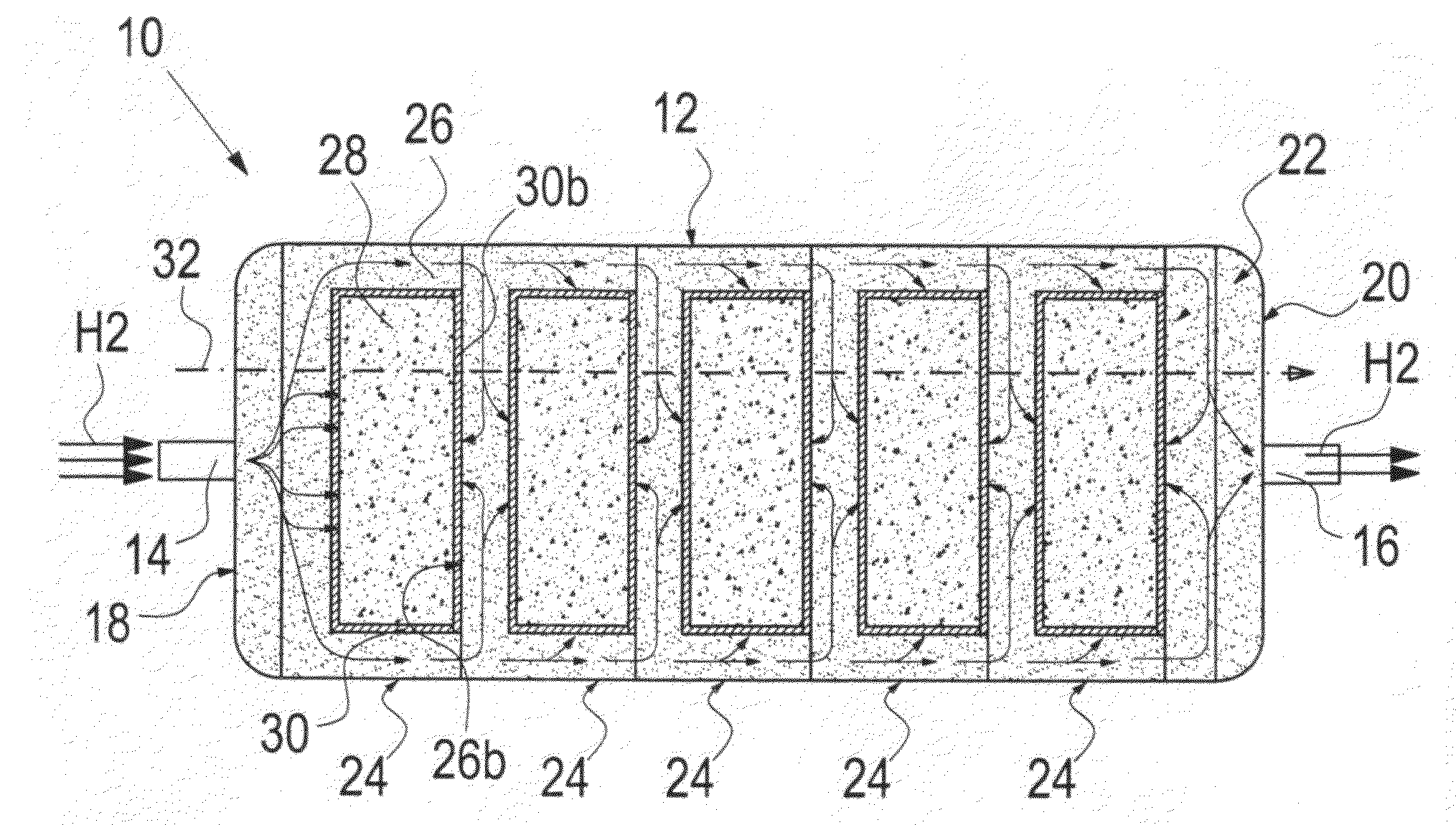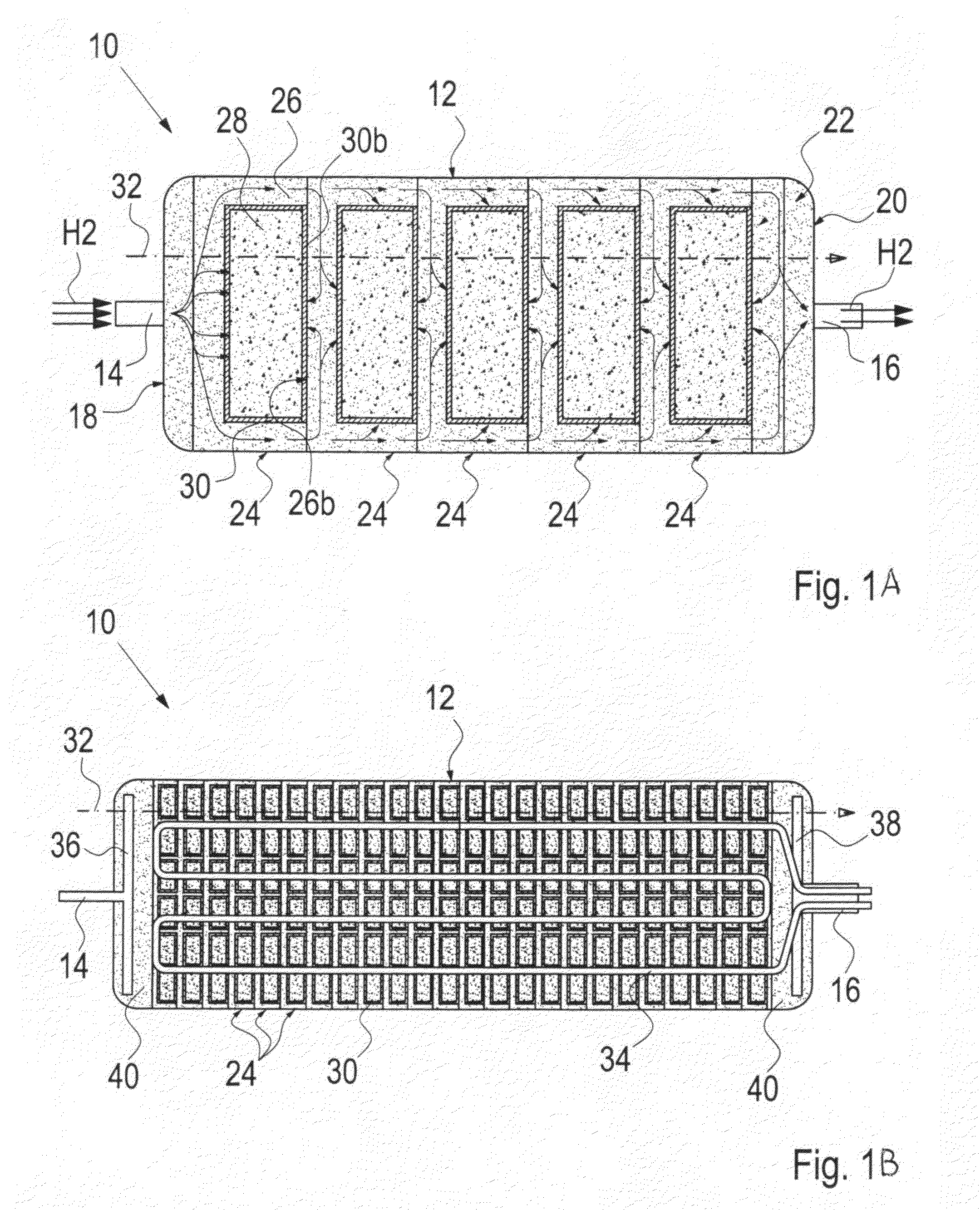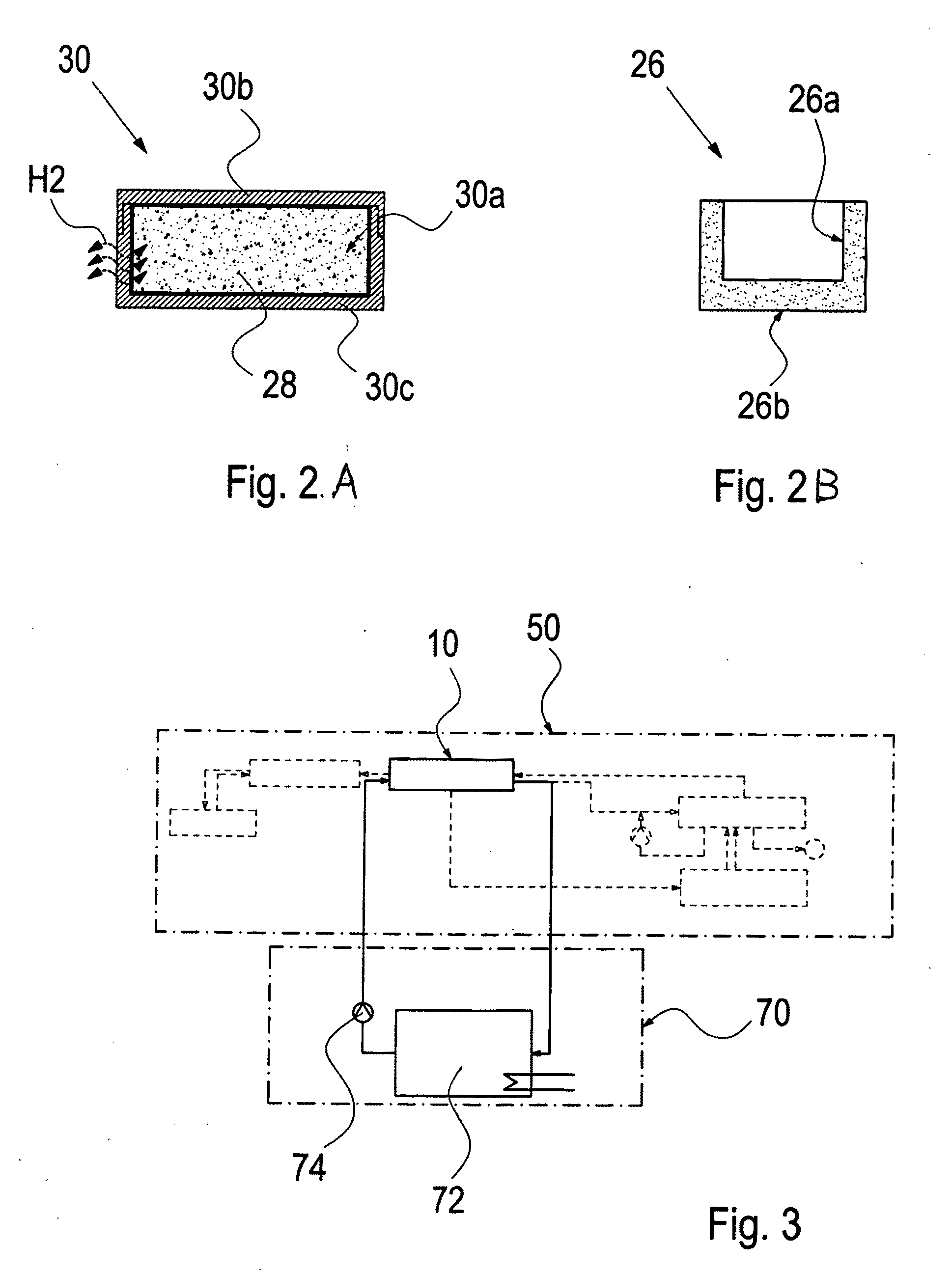[0012]In this way, the porous body advantageously assumes multiple functions. On the one hand, it serves as a mechanical support for the container filled with
storage material, while on the other hand it serves as a flow path for hydrogen from the
storage material out of the housing and / or from a housing inlet to the storage material. In addition, it serves as a heat conductor, in order to cool the storage material during filling, if it is heated by exothermic ad- or absorption, or to heat it during emptying, in order to provide heat of reaction for endothermic
desorption and to achieve purposeful release of hydrogen from the storage material. Any desired storage material may be used. The hydrogen reservoir may be filled within just a few minutes. The double
enclosure of the storage material provides for an inexpensive and safe tank construction. A filling
station infrastructure for filling hydrogen tanks may be simplified considerably over
high pressure reservoirs operating at several hundred bar and conventional solid tanks. Under service conditions,
coupling with a fuel
cell system with evaporative cooling is particularly favorable.
[0014]Because the container may be embedded in the preferably cup-shaped porous body, stable
accommodation of the storage material is achieved. This makes it possible to reliably prevent the generally pulverulent storage material from being entrained out of the hydrogen reservoir. The storage material is safely encapsulated in the container and retained by the porous body. In comparison with known arrangements, in which pulverulent storage material is retained in a finely dispersed manner in a
metal foam matrix or between aluminum lamellae, production is additionally simplified. The container is filled, closed and embedded in the porous body. Mechanical forces due to expansion of the storage material, for instance due to storage of hydrogen, during charging with hydrogen may be absorbed by the container and / or by the porous body. The storage material may expand by up to 20% during
hydrogen storage. The cup-shaped container is preferably closed by a lid with an
interference fit. In this respect, the internal
diameter of the lid is made to be somewhat smaller than the external
diameter of the cup. The lid is heated and positioned on the colder cup in the expanded, heated state. During cooling the lid shrinks such that the lid is joined stably to the cup. Cup and lid are particle-tight when closed.
[0015]In at least one reservoir axis, a plurality of units may advantageously be arranged adjacent one another. The size of the reservoir may readily be changed at the
design stage by stacking the units and / or arranging them side by side. The units may be positioned in a modular manner adjacent one another widthwise and / or heightwise. The
modular construction with the preferred units facilitates the manufacture of hydrogen reservoirs in accordance with different objectives.
[0016]Advantageously, the units may be arranged in such a way that a lid of the container of the one unit supports the base of the porous body of the next unit in the stack direction. A staggered arrangement is also possible, in order to improve flow control. In this way, the container is in all-round contact with the porous body and is held secure thereby while also being held in intimate
thermal contact with the heat-conducting porous body. The housing is preferably completely filled with such units and is therefore very robust with respect to vibrations or
exposure to impacts. Furthermore, degradation, caused by thermal overheating of catalysts associated with the storage medium, preferably
titanium-based catalysts in storage materials based on alanate and / or on
amide /
hydride and / or on hydridoborates, may be avoided.
[0019]To improve utilization of the empty volume in the porous body and to speed up reaction
kinetics, the pressure may be selected to be high during filling, for example 50 bar or more, in accordance with the selected wall thickness of the housing of the hydrogen reservoir.
Hydrogen gas may be stored under pressure in the porous body, in addition to the hydrogen in the storage material.
[0020]In a favorable configuration, a
temperature control agent line may be arranged inside the housing, which line may be designed in particular for connection with a vehicle cooling
system. In this way, purposeful
temperature control may be improved during filling and / or emptying of the hydrogen reservoir.
 Login to View More
Login to View More 


